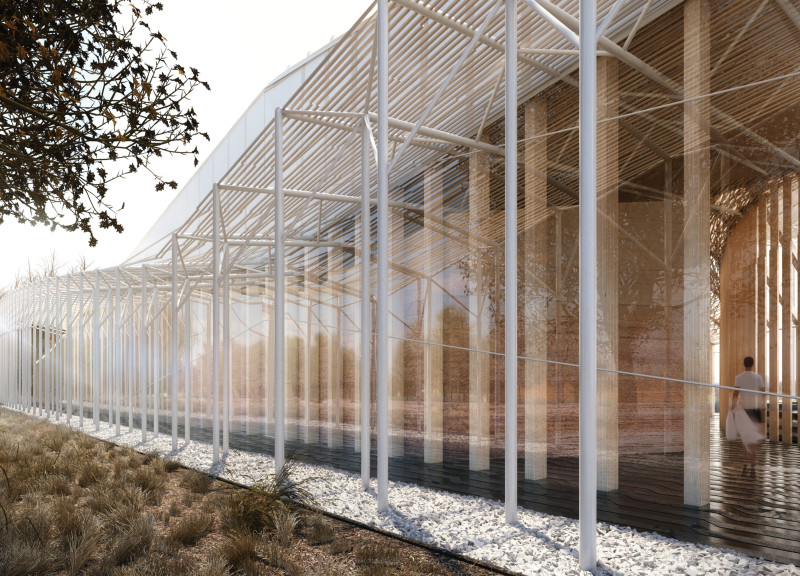5 key facts about this project
The essence of this design revolves around the concept of connecting the user to the natural surroundings, enhancing the therapeutic experience that the spa offers. The use of locally sourced blue clay is significant, as this material is not only applicable for its aesthetic appeal but also for its recognized health benefits. By bringing in this natural element, the project reinforces its commitment to intertwining architecture with the landscape, offering visitors a unique sensory experience that reflects the unique qualities of the locale.
The architectural design emphasizes spaciousness and fluidity, allowing for seamless transitions between various functional areas of the spa. The design includes wellness facilities, relaxation areas, and spaces for social interactions, all arranged to facilitate movement and exploration. Expansive glass panels feature prominently, merging indoor and outdoor environments and fostering a deeper connection with nature. This architectural choice allows visitors to enjoy unobstructed views, enriching their experience as they engage with the surrounding landscape.
In terms of materiality, the design employs timber extensively, known for its sustainability and warm aesthetic, which creates a welcoming atmosphere within the spa. Reinforced concrete serves as a structural foundation, ensuring the durability of the building while providing a strong base for creative design elements. Additionally, fibrous cladding systems made of recycled wood materials contribute to the building's ecological footprint, promoting sustainable practices that align with modern architectural standards.
The integration of water features within the design plays a crucial role in reinforcing tranquility and promoting relaxation. Water bodies are strategically placed to create calming environments that accentuate the therapeutic qualities of the spa. The overall design is tailored to ensure that natural light permeates the spaces, enhancing the mood and well-being of the users.
One notable aspect of this project is its attention to user experience and comfort. Acoustic elements are carefully considered, providing a serene atmosphere conducive to relaxation. Thermal comfort is enhanced through the use of natural insulation materials, ensuring a stable climate within the building throughout the seasons.
The unique design strategies employed, such as the organic arrangement of spaces and the intentional use of natural materials, highlight an architectural approach that respects and celebrates the site's context. By prioritizing sustainability and user well-being, this project stands out as an exemplar of how modern design can respond to both ecological and human needs.
For those interested in finding out more about the architectural plans, sections, and detailed designs, a closer look at the project presentation will offer deeper insights into its thoughtful approach toward architecture and its integration with nature. Explore the architectural ideas that manifest throughout the project to fully appreciate the nuances and details that contribute to its overall vision.


























